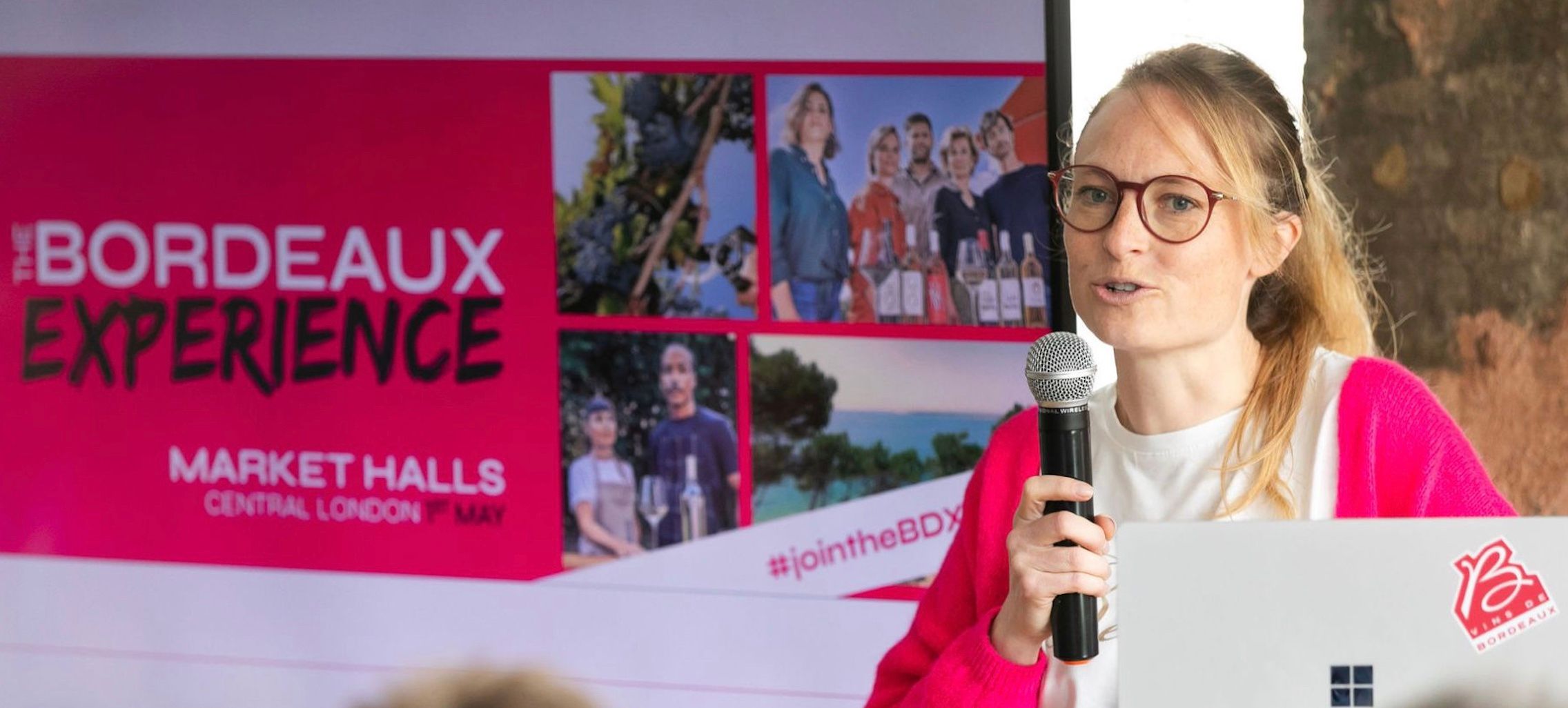Bordeaux is one of the most famous words in wine. Even people who know nothing about wine have heard of it, especially if they are an Ian Dury fan! That kind of fame, built up over years of fine wine production and keen marketing prowess has now given wines from these vineyards around the port city the kind of brand recognition that you simply cannot buy.
Such a reputation is a double-edged sword, however. The marketing team at the CIVB (Le Conseil Interprofessionnel du Vin de Bordeaux) are fully aware that the most challenging aspect of their role is to alter people’s perceptions of the grandiose image of the region, in order to highlight the modern, forward-thinking image of Bordeaux. Far from the stuffy pink-chino brigade of yesteryear, the majority of Bordeaux’s 5,000 winemakers, and around 60,000 direct and indirect wine industry workers, are involved in the production of easy drinking, fresh wines from this famously coastal region.
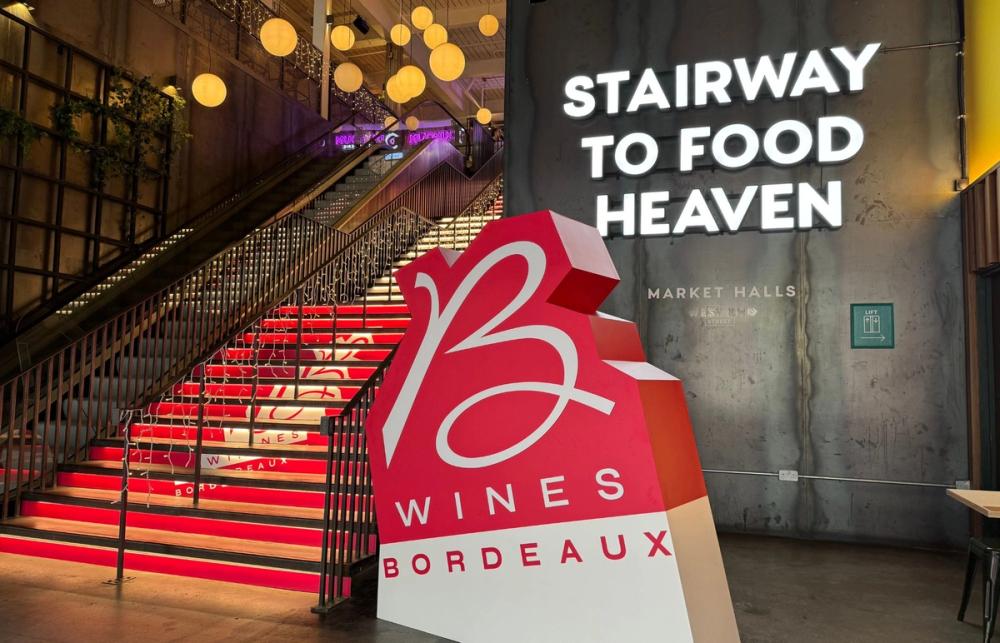
The Bordeaux Experience was unveiled in the UK earlier in the summer
Earlier this summer the team were in London to launch the Bordeaux Crew experience. At an event taking place in Oxford Street’s Market Halls casual dining hub, winemakers from across all regions of Bordeaux were given equal footing to showcase why being part of this collective mission means so much to them as France’s largest AOC producing region evolves once again to stay in front of market and climatic trends.
The market facing Bordeaux Crew
The new campaign is based upon the expression “Ensemble Tous Singuliers”, which translates as “Collectively Distinctive”. The aim is to tell the story of a forward-facing industry, with the production, environmental and social commitments through the perspectives of a 100 key-figures including producers, merchants, sommeliers, bar staff, chefs, and wine drinkers across the world. These many and varied stories include grape growers and their work with regenerative agriculture, to bartenders using sweet whites in new and exciting cocktails, and the use of the #BordeauxLocal hashtag to show off to show off the pubs, bars, clubs and restaurants of Aquitaine. All show off their pride as part of the Bordeaux Crew.
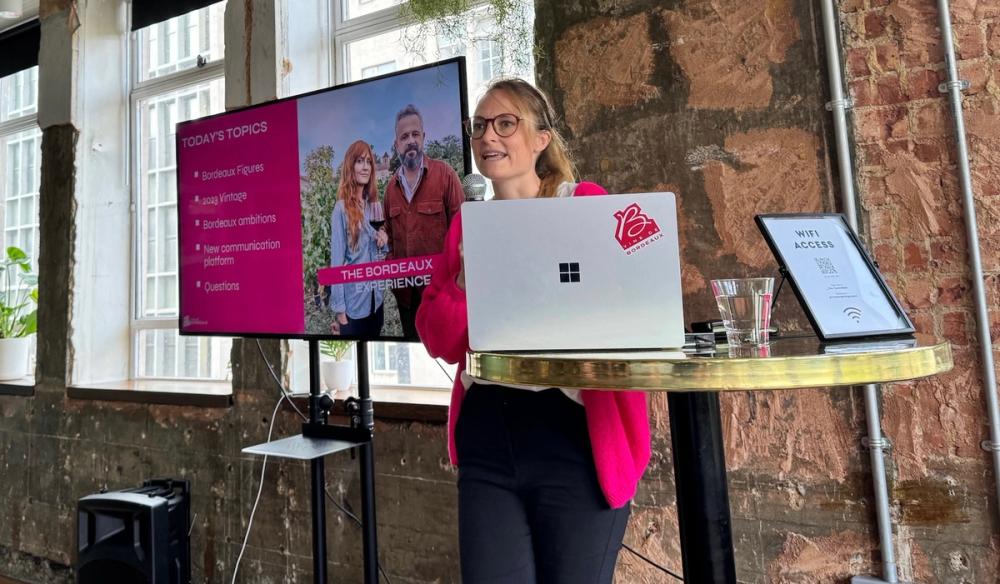
Bordeaux Wines' Caroline Vigneron sets out the vision for Bordeaux Experience art the London launch
“The idea behind this new campaign began in November 2021,” revealed Caroline Vigneron, the CIVB’s European marketing manager. “We were aware of the Bordeaux-bashing in certain segments of the industry, and it created a huge sense of frustration for not being known for who we are. There are fabulous people in Bordeaux with lots of energy going into innovative production and messaging to maintain our presence in markets.”
The campaign itself was designed with the UK trade firmly in mind. The UK is the fourth largest export destination in terms of volume, and third in terms of value for Bordeaux’s exports. A modest, but significant 3% increase in sales to €310m in 2023 continues to set a new benchmark for future vintages. With 2023’s well documented mildew issues, it’s increasingly important to highlight the lighter alcohol reds and the increase in aromatic dry whites as part of the market focused approach. The production may be slightly reduced, but the wines fit the bill of what customers are increasingly looking for.
Each region of Bordeaux was given equal footing at the London event, highlighting more than ever the collaborative approach of the majority within Bordeaux behind this new campaign. “It’s really nice that everyone is involved,” continued Vigneron. “We’re all going to speak together in the same way and we’re all proud of the positivity and energy of this campaign. We’re a big family with 2,000 years of history that’s always moving. We’re all part of this.”
Commitment to sustainability
The rise in organic viticulture in the last decade (now up to a quarter of the vineyard area) been mightily impressive.

Benjamin Barreau at Château de la Dauphine was able to set out what it is doing to be sustainable in its vineyards and cellar
Benjamin Barreau is at Château de la Dauphine in Fronsac said at the event: “We have been certified organic since 2012 and continue to use biodynamic methods to breathe life into our soils,” enthused Barreau. “Not only do we believe in the approach, it’s also given a huge boost in our wine tourism efforts with many people sharing our values.”
Sustainability commitments when you’re the region’s number one employer, however, need to go much further. Over 75% of vineyards are now at least HVE (or equivalent) certified, moving ever closer to the goal of 100% by 2030. Bordeaux Cultivons Demain is the flagship approach launched in 2001 and run through the COVB, but shared, founded and monitored by independent producers.
Run in accordance with ISO 26000 (the International Standard for Social Responsibility), the approach sees producer pathways formed for improvements in diverse aspects of the wine business. From environmental concerns including packaging, water usage, and promotion of biodiversity all the way to the social contract with their immediate region, including job creation, transparency, and traceability.
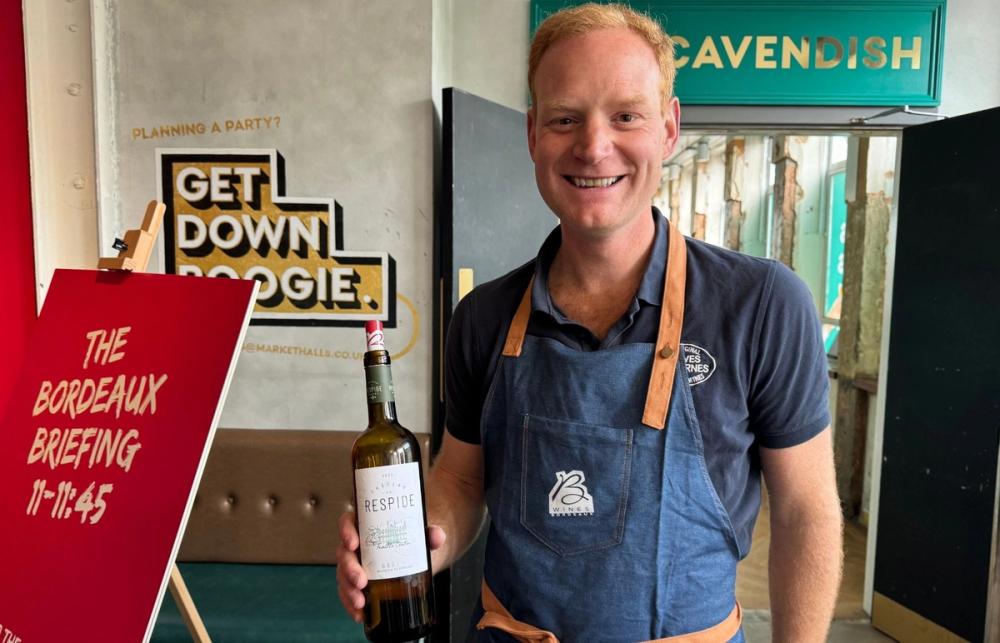
Pierre-Edouard Chatin is the winemaker at Château de Respide
Pierre-Edouard Chatin, winemaker at Château de Respide in Roaillan in Graves, highlights membership of Bordeaux Cultivons Demain in itsjourney to a more circular use of CO2. “There’s a saying from the 15th Century of having Christmas on your balcony, and Easter in front of the fire, so climate change is clearly nothing new,” he said. “But it is newly dramatic. It’s the first time where it’s clear that human activity is a large cause.”
The efforts of the likes of Chatin have seen greenhouse gas emissions on track to reduce 54% between 2007 and 2030, and down to zero by 2050.
Increasingly diverse portfolios
One of the main drivers of the Bordeaux Crew initiative is to promote the changing make-up of the portfolios across Bordeaux. “It’s been so common for us to hear ‘Of course I know Bordeaux, but it’s not a wine for me’,” said Vigneron. “It’s on us to continue to promote our easy drinking reds, fresh whites, roses, and bubbles, and all of our new grape varieties that are changing the face of the region.”
One of the most notable changes is the large increase in the production of Crémant. These traditional method bubbles have seen a 278% pick up in production in the last 10 years, albeit from a small base.
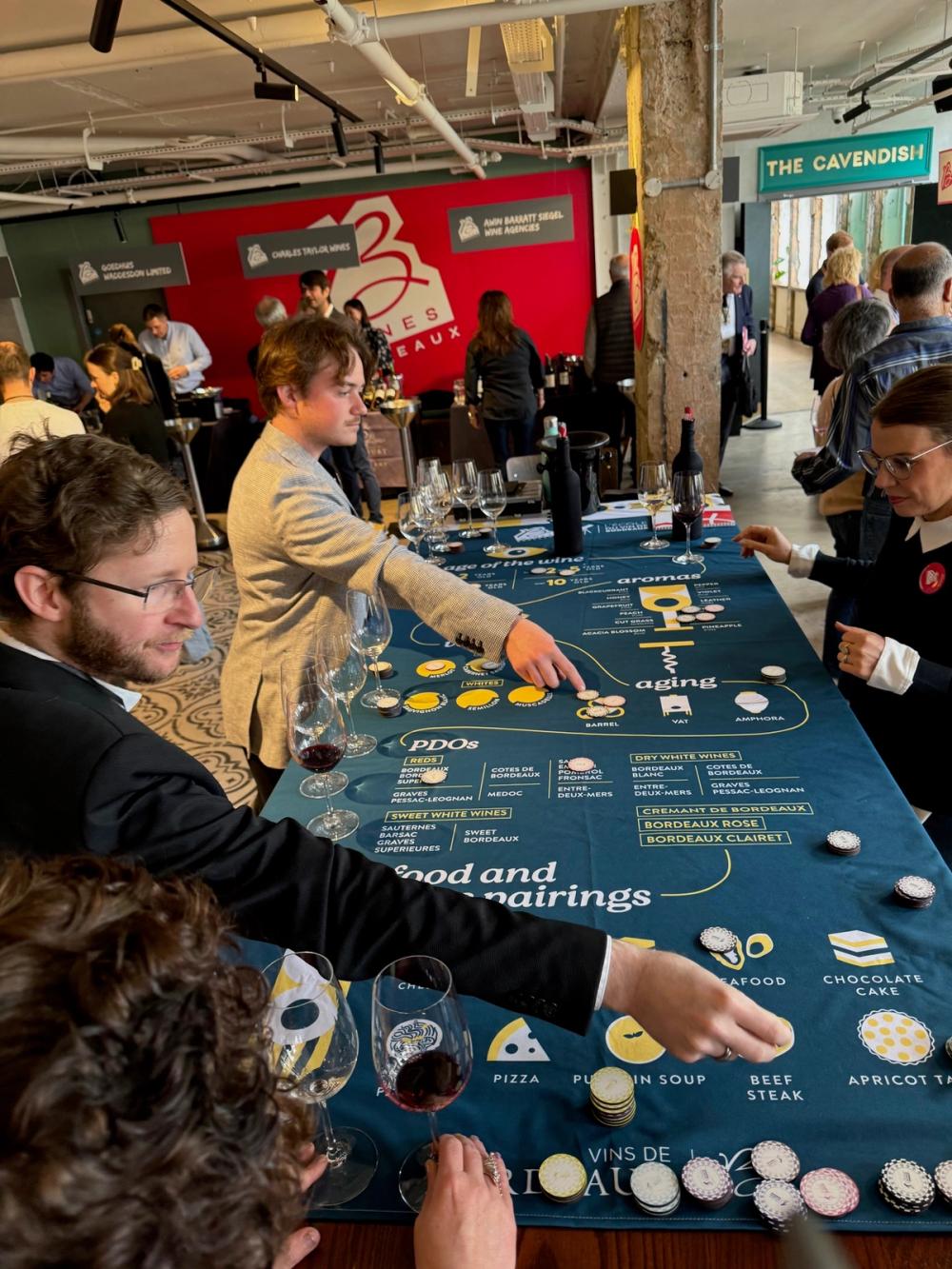
The Bordeaux Experience tasting included a number of interactive educational ideas like the quiz-based casino to test your Bordeaux knowledge
Camille Giai is from Château Roquefort in Entre-Deux-Mers, the region responsible for the majority of fruit for Crémant production. “The Garonne and Dordogne areas have perfect calcerous and marine soils for refreshing whites and rosés,” noted the former Champagne-based Giai. “These are grapes with great acidity and minerality, so it makes sense that crémants are going form strength to strength around here.”
The quality of the white and rosé crémants from Château Moulin de Peyronin, as well as Château Pinet La Roquette, were clear favourites in both trade and consumer tasting throughout the day.
Also of note on the day were the increasingly impressive dry rosés and one or two brilliant examples of the lesser-spotted clairet. This historic wine style from the region (where we get the word ‘claret’ from) is either a light red or a dark rosé, depending on your mood that day. Skin maceration is usually from six to 72 hours depending on the grapes and style the producer is going for.
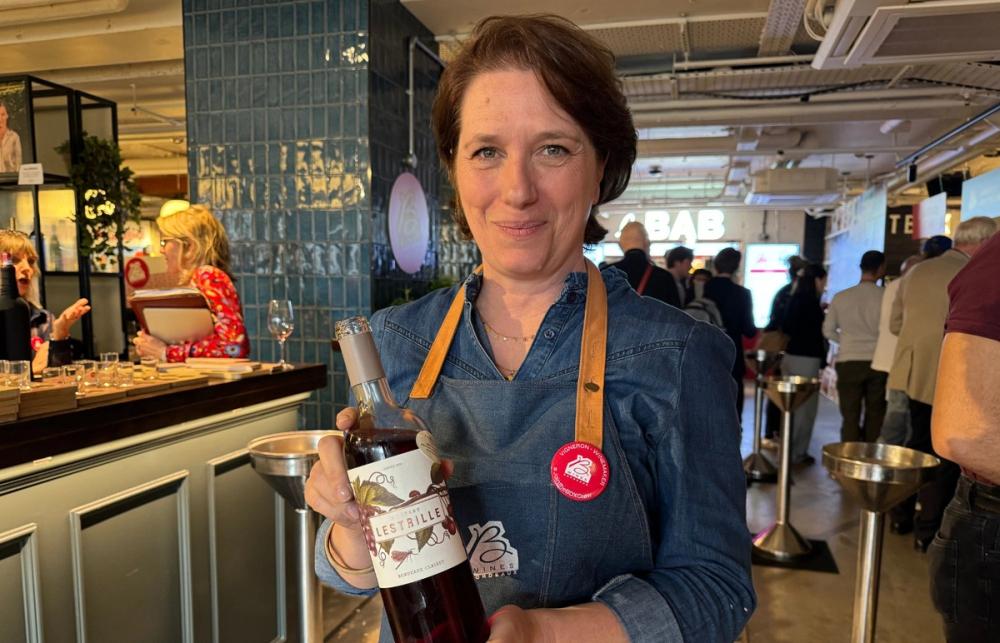
Estelle Roumage proudly shows her Clairet wine
Estelle Roumage from Château Lestrille was in London presenting her fabulous portfolio from the Entre-Deux-Mers region, although just a stone’s throw from the big city itself. Her 100% merlot Clairet was another fan favourite on the day; so fresh, vibrant and versatile, and one that won a lot of praise during the evening’s consumer tasting. A note to all importers, more Clairet please!
Native varieties show their value
Roumage also presented a brief masterclass on the changing face of the vineyards in Bordeaux to combat the changing climate. This includes the re-emergence of native varieties from Bordeaux’s past.
“Since I joined Lestrille in 2001 our holdings have increased from from two to 15 hectares,” he explained. “Some vineyards were bought ready to go, but many required replanting. This gave us a great opportunity to really consider what we think will work moving forward.”
Having spent some of her formative years in the vibrant wine scene in Marlborough, New Zealand, Roumage returned to Bordeaux with a desire to replicate that entrepreneurial spirit at Lestrille.
“I liked the idea of seeing more single varietal wines, and using new ageing techniques in eggs or amphorae,” said Remouge. “But it’s the resurgence of old varieties such as Castets (Maturana Tinta) which is also really interesting to us. We’re planting 1.5 hectares next month. It’s very resistant to mildew, late budding, and keeps great acidity, so you can see its appeal.”
Everyone welcome
The day would not have been complete without a final word from Vigneron. “This new communication campaign is based on a simple idea, that our wine for everyone,” she stressed. “Our campaign and our attitude are to unite the people who make, sell, and drink the wine. Everyone is welcome to join the Bordeaux Crew.”
If the feedback from those in attendance at both trade and consumer event is anything to go by, the new campaign has hit the mark from the off.
- To discover more about the Bordeaux Crew, please visit the website on - https://www.bordeaux.com/gb/join-the-Bordeaux-Crew.
- For more information on the region of Bordeaux, including their fabulous new immersive map, please visit Bordeaux’s École du Vin - https://www.ecoleduvindebordeaux.com/en.
- Mike Turner is a freelance writer, presenter, educator, judge and regular contributor for The Buyer.
